Random, interesting studies
-
Ferulic and vanillic acid seem to have some estrogenic properties. Maybe gigantol and Geranylgeraniol are some alternatives.
Quercetin and Ferulic Acid Elicit Estrogenic Activities In Vivo and In Silico
https://pubmed.ncbi.nlm.nih.gov/37446770/The authors' conclude that FA causes human breast cancer cell proliferation by up-regulation of HER2 and ERalpha expression.
https://pubmed.ncbi.nlm.nih.gov/16893382/Ferulic acid possessed phytoestrogenic effect by up-regulating pS2 gene expression and the receptor subtype of ERalpha.
https://pubmed.ncbi.nlm.nih.gov/21246834/Although this one says it Inhibits estrogen.
https://pubmed.ncbi.nlm.nih.gov/33987364/
I've found less evidence of vanillic acid being estrogenic so I'd be more willing to experiment with that one.
Effects are abolished by anti-estrogenic substance , which doesn't prove it to be directly estrogenic, sometimes they use weird substances with a lot of different effects.
https://pubmed.ncbi.nlm.nih.gov/25106917/
This study says that the Anti-osteoporosis effects of syringic acid and vanillic acid are not due to estrogen. Possibly even anti-estrogenic ?
https://pubmed.ncbi.nlm.nih.gov/31186185/
vanillin elevated both serotonin and dopamine levels in brain tissue.
https://pubmed.ncbi.nlm.nih.gov/25595338/
"Moreover, treatments with 10 μM gigantol increased StAR protein levels and progesterone production from MA-10 Leydig cells. However, neither ferulic acid nor isoferulic acid influenced StAR protein synthesis and progesterone production in MA-10 Leydig cells. "
https://pubmed.ncbi.nlm.nih.gov/35723385Gigantol seems interesting. Anti-cancer, Inhibits mTOR.
https://pubmed.ncbi.nlm.nih.gov/33737087/
Geranylgeraniol is another candidate. Also increases progesterone and testosterone. Probably easier to obtain .
https://pubmed.ncbi.nlm.nih.gov/26757775/It protects from muscle atrophy in this one.
https://pmc.ncbi.nlm.nih.gov/articles/PMC7652489/In this human study it slightly increases testosterone in males .
https://www.mdpi.com/1661-3821/3/4/43 -
@CrumblingCookie thanks for the info , solidified another thing ive been looking for
oh right, yeah sounds reasonable , better for the tail end i guess if symptoms stick for >7 days or get too wildits really effective at lowering neutrophils in lungs in viral infections (big part of the damage)
(found neutrophils only really needed to peak early to kickstart the process & attract other cells, unless theres a big lack of lymphocytes,
by the time symptoms are noticed theyre probably already peaking or close)
doi: 10.1055/s-2006-958060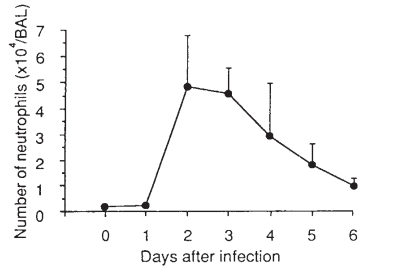
~200mg heq, lowered neutrophil in lungs a lot , and giving it on day 0 the viral count increased only a little. but still probably better holding for a day or 2 of symptoms

should be very effective for people hit hard by symptoms in current breakout -
@Mauritio thanks will have a look through, quercetin definitely feels estrogenic to me even at low dose, and long half life. im trying it rn for a specific effect. the supplement doses are kind of crazy for where it has effects generally
-
@Mauritio the 1st one, ferulic acid didnt increase uterus weight where quercetin did, (5mg/kg ferulic lowered it a little fitting with the other study showing anti-estrogenic activity at 5mg/kg, but lose some of the effects here),
had mild non significant effect on increasing estrogen vs quercetin that increased it 22.48%.
but thats at ~100mg - 150mg heq. with the estrogenic potential its probably more significant at higher doses. tho has some of its benefits at 150mg, so i think its probably an ok dose there. though more gained furtherso milder estrogenic activity than quercetin , but it still binds receptors.
but the breast cancer 1 you posted is concerning yeh they didnt use crazy high concentrations
and potent effect

was dose dependant coming down from 1uM to 100nM to 10nM.
the other one you posted showing anti estrogen effect was low dose 5mg/kg, ~ 50 - 75mg human.
raised testosterone & estrogen together
lowered the elevated estrogen receptor
https://pmc.ncbi.nlm.nih.gov/articles/PMC8106114/,
here given to male rats it restored & increased testosterone higher than controls 2.45 -> 3.8 , 50mg/kg rats
https://onlinelibrary.wiley.com/doi/abs/10.1111/and.12798blood levels of testosterone plummet when u give male rats estrogen. so doesnt seem to be showing estrogenic effect in males for some reason,
but the other = good enough reason for some caution yeh
-
Rosmarinic acid.
Almost doubled testosterone in controls. And strongly protected against EMF damage . https://pmc.ncbi.nlm.nih.gov/articles/PMC3847387/#sec12
It also protected against different types of radiation .
https://pmc.ncbi.nlm.nih.gov/articles/PMC11053252/ -
This post is deleted! -
@Mauritio said:
Rosmarinic acid.
There's a recurring relation of most anabolic substances being really immunoinhibitive since estrogen receptors are essential also in necessary inflammatory responses and the androgen signallings are quite contrary to that.
I.e. at some basic metabolic level it's mutually exclusive to be high androgen and to be sick.
I'd need to take a very, very specific look at rosmarinic acid because the carnosic acid as a diterpene in rosemary and sage reportedly locks as an antagonist into the VDR. And with a rather high affinity of Ki=54 nM. Thymoquinon from Nigella sativa (black cumin) is messy about that, too. -
@CrumblingCookie interesting . Yeah it might have some messy hormonal effects.
-
@cs3000 what do you think about a catalase supplement ?
Given that selegiline, ergothioneine and other successful anti-aging substance all leverage the antioxidant pathway, it seems like something worth trying.
Plus over expression of catalase to mitochondria lead to a 20% increase in life span in mice.The supplements are very cheap. The only issue I see is that of absorption. Would there be a systemic effect , penetrating into the cells and mitochondria?
If that wasn't the case there wouldn't be douzens of success stories of people reversing grey hair with it , since h2o2 is produced inside the cells and mitochondria . -
@Mauritio was looking to get one a while back maybe didnt find a decent supp, in pigs it works at 2g per kg of diet at least locally in the intestines, probably less
maybe its better mixed into food like the pig studies because of the higher ph making it more stable?
getting it up intracellularly should react with h2o2 creating more oxygen to drive mito respiration if theres an excess, butthis one using catalase injected i.v raised lung catalase, they think it was indirect effect 10.1152/jappl.1992.72.3.858
(they increased it 70x in blood lol, relatively milder increase in lungs so i guess most of it gets used up before hitting cells, unless its intestinal cells which get it direct. with indirect increases elsewhere
normal catalase didnt work in the brain https://pmc.ncbi.nlm.nih.gov/articles/PMC4577289/#F004theres a unique way to do it with lower dose by conjugating catalase with polyethylene glycol and putting it in the nose .
but idk if it does that spontaneously mixed together, looks like a lab process,
increased catalase activity >2x in lung fluid
https://www.nature.com/articles/s41598-020-60443-2#Sec6Interestingly though feeding chickens catalase increased catalase in liver well along with the intestine, and some in blood
https://www.frontiersin.org/journals/veterinary-science/articles/10.3389/fvets.2022.802051/full
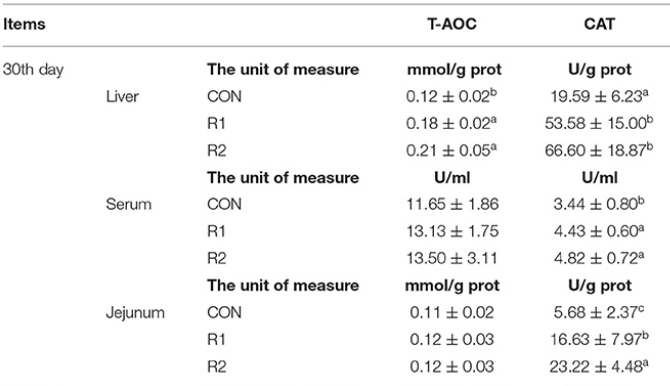
Something in one of the pig studies fed 660mg or 280 U per kg diet, their calcium in blood went up a lot, https://www.mdpi.com/2076-2615/12/7/828
and catalase should help prevent calcification induced by h2o2
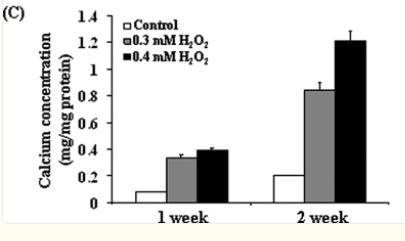
^ calcium in blood vessel cells
https://www.tandfonline.com/doi/full/10.3109/10799893.2012.672994#d1e959 through excess ROS signalling and TRPV https://pmc.ncbi.nlm.nih.gov/articles/PMC7599480/#sec4-antioxidants-09-00963Seems its helping to prevent calcium go into cells which should be good for calcification issues / excitotoxity
https://journals.asm.org/doi/10.1128/spectrum.00654-21
nice effect on ileum villus height

, ordered some
the units are confusing though, pig / chicken studies theyre using units in the 100s for high mg or gram amountsand this is insightful, https://www.jbc.org/article/S0021-9258(20)35618-0/fulltext even enzymatically inactive catalase can protect against oxidative stress well (hypochlorus acid which is one the most damaging molecules , reacts with it. produced by neutrophils)
-
@Mauritio interesting one, more ROS in adipose stem cells from aging donors. ability to differentiate crashed. and adding catalase restored their ability to differentiate
https://www.sciencedirect.com/science/article/pii/S1873506122000575#s0100
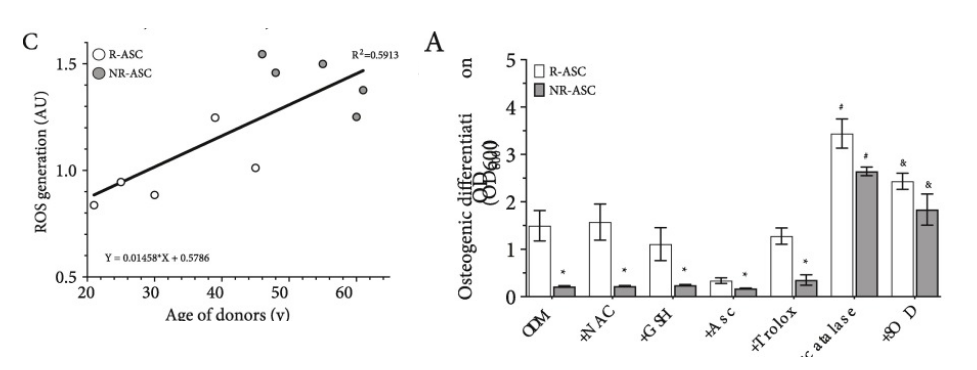
-
This study shows that catalase and rapaymcin have an overlap in function.
Very interesting so low catalase might cause mTOR activation, reversed by rapa, an antioxidant or presumably catalase supplementation .
https://pubmed.ncbi.nlm.nih.gov/36474295/@cs3000 said in Random, interesting studies:
Interestingly though feeding chickens catalase increased catalase in liver well along with the intestine, and some in blood
That's remarkable! I'm not sure what the HED is but if I'm right it's pretty low I think a few thousand units and most supplements have several 10k per pill.
Also: the trippling of catalase in organs might have drastic effects on health and longevity ,since those values are in line with that selegiline or ergothioneine achieve.Check out this post: ergothioneine increased catalase by about 2.5 fold.
https://bioenergetic.forum/post/17948
So it's actually less effective at raising CAT than catalase supplementation in chickens , yet it still increases life span by 20% . -
@mauritio 1 more piece this backs the calcification part i was talking about, catalase gives a potent anti-calcification effect in vivo
https://scielo.isciii.es/scielo.php?pid=S1889-836X2017000100013&script=sci_arttext&tlng=en
Wild type vs TG with catalase overexpressed (CRF = renal failure)
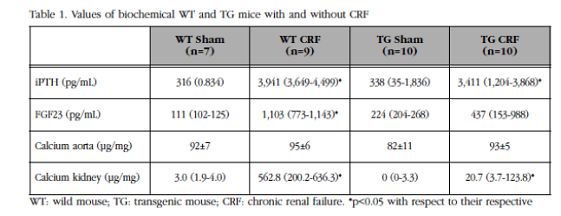
** profound protection from calcification, 562ug/mg calcium in kidney without the extra catalase and with the catalase just 20ug@mauritio so rapamycin acts down a few steps & we can get more direct through catalase , cool (but not as broadly increasing as rapamycin across cells taken directly). 1 thing i dont like about rapamycin is it induces anxiety or depression in the models after a while (too low neurogenesis maybe?), but the catalase gets to the core by the looks of it then
-
That's remarkable! I'm not sure what the HED is but if I'm right it's pretty low I think a few thousand units and most supplements have several 10k per pill.
dose is confusing why are they showing extreme amounts of units vs the studies at 500mg - 1g catalase as 100s of U?
,maybe 2kg of food for the pig one i read they eat same calories as humans,
before with rat ones its worked out a few times as a human eating 1kg of food the same thoergothionine raised it better in the blood but maybe with catalase longer than 30d it increases more, the mda lowering is similar functionally. tho ergothionine might give a broader effect & in the brain with catalase giving indrect effect in some places
this pig one showed it raised catalase measured in the small intestine mucosa like +40% by 35 days, but the functional effect it halved the mda like the ergothionene showed too https://www.mdpi.com/2076-2607/8/3/391
-
ah yeah the broiler one says 5000U per g catalase https://www.frontiersin.org/journals/veterinary-science/articles/10.3389/fvets.2022.802051/full
gonna look with a fresher head but seems extremely low amounts used?
this one puts 660mg per kg diet with 280U/g catalase https://www.mdpi.com/2076-2615/12/7/828
So target by the feeding studies is say 150u - 500u , but absolute weight probably counts some too without enzyme activity. which would be ~50mg by the broiler one going for a minimum by that. but 50mg can be very variable in enzyme activity depending on its extraction....
~600mg of food grade catalase looks safe enough in 90 day window even at very high activity units, but 6g pushing it https://pmc.ncbi.nlm.nih.gov/articles/PMC9943928/
But the studies all used very low units < 1000 daily heq, so might be worse effects going to those extremes
Gonna try 50mg split into meals , unless its a low unit one.
I should be a prime candidate for testing this -
dietary catalase
https://www.gasclibrary.in/wp-content/uploads/2024/08/72.N.C.-Vora-216-221STUDYOFACTIVITYOFCATALASEENZYMEINVARIOUSFRUITS.pdf
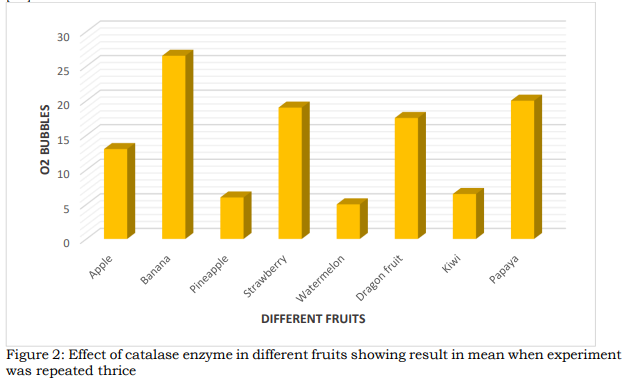
2g of fruit + 60mg h2o2effect of fruit on liver catalase
https://academic.oup.com/fqs/article/doi/10.1093/fqsafe/fyac029/6570892#357505458(they didnt find much correlation between the increase and the polyphenols / flavanols, just slight positive effect from naringin and hesperedin, so probably eating the catalase is a good part of health effects of eating certain fruits)
-
@cs3000 oh nice I didn't know they contained it.
-
-
This post is deleted! -
@CrumblingCookie great healing effect of butyrate on the gastric ulcer thanks, especially the leukotrine and growth factor,
theres microencapsulated form coated with triglyceride / stearic acid available so it doesnt get absorbed by the stomach mucosa for effects lower down. should be able to smell if its legit crushing some
theres another form coated with ethyl cellulose instead of triglyceride, looks more suitable if someone wanted to target large intestine moreBUT: for small intestine , ileum looks vulnerable to increased butyrate https://pmc.ncbi.nlm.nih.gov/articles/PMC11641654/#sec2-ijms-25-12998 so the forms that release there might be a problem over time . using standard sodium butyrate or butyric acid dissolved in water might be better
(also the coated sodium forms = sodium cant separate and dilute in liquid in stomach, direct undiluted sodium release if damage there probably not good)